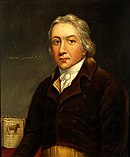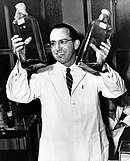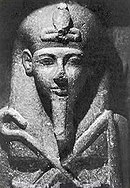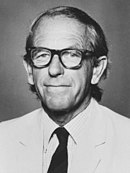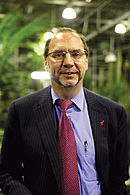Portal:Viruses/Selected biography
The following biographies are featured as the Selected biography at the Viruses Portal. To suggest a biography for inclusion, use the suggestions page
Portal:Viruses/Selected biography/1
Edward Jenner (1749–1823) was an English physician and scientist who pioneered the smallpox vaccine, the world's first vaccine. Noting the common observation that milkmaids were generally immune to smallpox, Jenner postulated that the pus in the blisters that milkmaids received from cowpox (a similar but much less virulent disease) protected them from smallpox. In 1796, Jenner tested his hypothesis by inoculating an eight-year-old boy with pus from an infected milkmaid. He subsequently repeatedly challenged the boy with variolous material, then the standard method of immunisation, without inducing disease. He published a paper including 23 cases in 1798. Although several others had previously inoculated subjects with cowpox, Jenner was the first to show that the procedure induced immunity to smallpox. He later successfully popularised cowpox vaccination.
Jenner is often called "the father of immunology", and his work is said to have saved more lives than that of any other individual.
Portal:Viruses/Selected biography/2
Sir Frank Macfarlane Burnet (3 September 1899 – 31 August 1985) was an Australian virologist, microbiologist and immunologist. His early virological studies were on bacteriophages, including the pioneering observation that bacteriophages could exist as a stable non-infectious form that multiplies with the bacterial host, later termed the lysogenic cycle.
With the outbreak of World War II, Burnet's focus moved to influenza. Although his efforts to develop a live vaccine proved unsuccessful, he developed assays for the isolation, culture and detection of influenza virus, including haemagglutination assays. Modern methods for producing influenza vaccines are still based on his work improving virus-growing processes in hen's eggs. He also researched influenza virus genetics, examining the genetic control of virulence and demonstrating, several years before influenza virus was shown to have a segmented genome, that the virus recombined at high frequency.
Portal:Viruses/Selected biography/3
Jonas Edward Salk (28 October 1914 – 23 June 1995) was an American medical researcher and virologist, best known for developing the first successful polio vaccine.
Unlike most other researchers, Salk focused on creating an inactivated or "killed" virus vaccine, for safety reasons. The vaccine he developed combines three strains of wild-type poliovirus, inactivated with formalin. The field trial that tested its safety and efficacy in 1954 was one of the largest carried out to date, with vaccine being administered to over 440,000 children. When the trial's success was announced, Salk was hailed as a miracle worker and national hero. A little over two years later, 100 million doses of the vaccine had been distributed throughout the US, with few reported adverse effects. An inactivated vaccine based on the Salk vaccine is the mainstay of polio control in many developed countries.
Salk also researched vaccines against influenza and HIV. In 1960, he founded the Salk Institute for Biological Studies research centre in La Jolla, California.
Portal:Viruses/Selected biography/4
Rosalind Elsie Franklin (25 July 1920 – 16 April 1958) was a British biophysicist and X-ray crystallographer who made critical contributions to the understanding of the fine molecular structures of DNA, RNA and viruses.
Franklin led pioneering research on the structure of tobacco mosaic virus (TMV), a rod-like RNA virus, using X-ray crystallography. She first showed that, contrary to contemporary opinion, TMV virus particles were all of the same length. With Kenneth Holmes, she showed the virus's coat is composed of protein molecules arranged in helices. She designed and built a model of the virus to be exhibited at the 1958 World's Fair. She speculated that the virus is hollow, and correctly hypothesized that the RNA of TMV is single-stranded. Her work, together with that of Donald Caspar, revealed that the viral RNA is wound along the inner surface of the hollow virus. Her laboratory, which also included Aaron Klug, studied other plant viruses, including turnip yellow mosaic virus and viruses infecting potato, tomato and pea. Franklin also worked on icosahedral animal viruses, including poliovirus.
Franklin is commemorated in the Rosalind Franklin University of Medicine and Science.
Portal:Viruses/Selected biography/5
Aniru Sahib Sahib Conteh (6 August 1942 – 4 April 2004) was a Sierra Leonean physician and expert on the clinical treatment of Lassa fever, a viral haemorrhagic fever endemic to West Africa.
He joined the Centers for Disease Control and Prevention Lassa fever programme in Segbwema, first as superintendent and then as clinical director. After the Sierra Leone Civil War began in 1991, Conteh moved to the Kenema Government Hospital, where he spent the next two decades running the only dedicated Lassa fever ward in the world. He collaborated with the British charity Merlin to promote public health in Sierra Leone through education and awareness campaigns intended to prevent Lassa fever. With little funding and few supplies, he successfully reduced mortality rates and saved many lives until an accidental needlestick injury led to his own death from the disease in 2004.
Conteh received renewed public attention in 2009 as the hero of Ross I. Donaldson's memoir, The Lassa Ward.
Portal:Viruses/Selected biography/6
Ryan Wayne White (6 December 1971 – 8 April 1990) was an HIV-positive American teenager who became a national spokesman for AIDS research and public education about HIV/AIDS, after being expelled from school because of his infection.
White, a haemophiliac, was diagnosed in 1984 after infection by a contaminated blood treatment. HIV/AIDS was then poorly understood, and his return to school in Kokomo, Indiana was prevented by protesters; the ensuing legal battle gained national media coverage. Before his case, AIDS was widely associated with the male gay community; White was one of several who helped to shift that perception.
White died in 1990, one month before his high school graduation. Shortly afterwards, the U.S. Congress passed a major piece of AIDS legislation, the Ryan White Care Act. Ryan White Programs remain the largest provider of services for people living with HIV/AIDS in the United States.
Portal:Viruses/Selected biography/7
Many well-known people have survived the paralytic disease polio. The earliest identified case might be Siptah (pictured), Egyptian pharaoh 1197–1191 BC, whose mummified remains have a deformed leg possibly from polio. Claudius, Roman emperor 41–54 AD, walked with a limp after a childhood disease that historians have hypothesised might have been polio. Novelist Sir Walter Scott suffered paralysis in one leg after a teething fever in 1773, which left him lame; his detailed account of his disease has allowed a retrospective diagnosis of polio to be made with confidence.
For many of those who survived it, paralytic polio was a life-changing experience. The disease can lead to permanent physical disability; Itzhak Perlman, for example, plays the violin seated. Others recover completely, with some going on to excel in sports; Ray Ewry became world's foremost standing jumper after childhood polio. Some survivors, including singer Ian Dury and actress Mia Farrow, have campaigned for polio eradication or for disability rights.
Portal:Viruses/Selected biography/8
Frederick Sanger (13 August 1918 – 19 November 2013) was a British biochemist, the only person to have been awarded the Nobel Prize for Chemistry twice.
He started to research nucleic acid sequencing in the early 1960s. In 1975, he co-invented the "Plus and Minus" technique for sequencing DNA, which could sequence 80 nucleotides at once, a significant improvement on earlier techniques. Using this method, his group sequenced most of the 5,386 nucleotides of φX174 bacteriophage – the first virus and the first DNA genome to be completely sequenced – and showed that some of its genes overlapped. In 1977, he and his group pioneered the Sanger (or dideoxy chain-termination) method for sequencing DNA and used it to sequence the 48,502 bp bacteriophage λ. His technique remained the most widely used sequencing method until the mid-2000s, and was used to generate the first human genome sequence. Sanger is also known for sequencing bovine insulin, the first protein to be sequenced. The Sanger Institute was named for him.
Portal:Viruses/Selected biography/9
Randy Shilts (8 August 1951 – 17 February 1994) was an American journalist, author and AIDS activist. The first openly gay reporter for a mainstream US newspaper, Shilts covered the unfolding story of AIDS and its medical, social, and political ramifications from the first reports of the disease in 1981. New York University's journalism department later ranked his 1981–85 AIDS reporting in the top fifty works of American journalism of the 20th century. His extensively researched account of the early days of the epidemic in the US, And the Band Played On Politics, People, and the AIDS Epidemic, first published in 1987, brought him national fame. The book won the Stonewall Book Award and was made into an award-winning film. Shilts saw himself as a literary journalist in the tradition of Truman Capote and Norman Mailer. His writing has a powerful narrative drive and interweaves personal stories with political and social reporting.
He received the 1988 Outstanding Author award from the American Society of Journalists and Authors, the 1990 Mather Lectureship at Harvard University, and the 1993 Lifetime Achievement Award from the National Lesbian and Gay Journalists' Association. He died of AIDS in 1994.
Portal:Viruses/Selected biography/10
Thomas Flewett (29 June 1922 – 12 December 2006) was a British–Irish virologist and an authority on electron microscopy of viruses, best known for his role in the discovery of rotaviruses. After Ruth Bishop and others discovered viruses associated with diarrhoea, Flewett showed that they could be visualised by electron microscopy directly in faeces. He dubbed them "rotaviruses" for their wheel-shaped appearance. His group described the different rotavirus serotypes, and did extensive research on the rotavirus varieties infecting many animals.
Flewett established one of the first English virus laboratories in Birmingham in 1956. In addition to his rotavirus work, he discovered the cause of hand, foot and mouth disease, identified two new species of adenovirus, and co-discovered human torovirus and picobirnaviruses. His other research included influenza, coxsackie A, coxsackie B and hepatitis B viruses.
Portal:Viruses/Selected biography/11
George Keble Hirst (2 March 1909 – 22 January 1994) was an American virologist who was among the first to study the molecular biology and genetics of animal viruses.
Hirst started to work on influenza virus in 1940, only a few years after it had been isolated. He soon discovered that the virus caused red blood cells to clump together. This phenomenon could be used to diagnose influenza, which had previously required growing the virus in ferrets. He invented the haemagglutination assay, a simple method for quantifying viruses, and later the haemagglutination inhibition assay, which measures virus-specific antibodies in serum. In 1942, he discovered the neuraminadase enzyme, showing for the first time that viruses could contain enzymes. Neuraminidase is the target of the neuraminidase inhibitor class of antiviral drugs, including oseltamivir and zanamivir. In 1962, he was also the first to propose the then-revolutionary idea that virus genomes can consist of discontinuous segments.
He co-founded Virology in 1955, the first English-language journal to focus on viruses, and directed the Public Health Research Institute in New York City for nearly 25 years (1956–81).
Portal:Viruses/Selected biography/12
Walter Reed (13 September 1851 – 22 November 1902) was an American physician in the U.S. Army medical corps who is known for his research on the epidemiology of yellow fever, at a time when viruses had only just been discovered.
Reed started to study yellow fever in the USA in the 1890s, showing that walking through swampy woods at night was associated with the disease, while drinking water from the Potomac River was not. In 1900, he led an army commission under the direction of George Miller Sternberg to investigate yellow fever in Cuba, where the disease was endemic. Building on Carlos Finlay's work suggesting that yellow fever was transmitted by a particular species of mosquito acting as a vector, Reed and co-workers confirmed Finlay's results, and also disproved the popular idea that the disease was transmitted by contaminated objects, such as clothing or bedding. The experiments involved the deliberate infection of human volunteers, several of whom died of yellow fever, and Reed pioneered the concept of medical consent.
Portal:Viruses/Selected biography/13
Françoise Barré-Sinoussi (born 30 July 1947) is a French virologist, known for being one of the researchers who discovered HIV.
Barré-Sinoussi researched retroviruses in Luc Montagnier's group at the Institut Pasteur in Paris. In 1982, she and her co-workers started to analyse samples from people with a new disease, then referred to as "gay-related immune deficiency". They found a novel retrovirus in lymph node tissue, which they called "lymphadenopathy-associated virus". Their results were published simultaneously with those of Robert Gallo's group in the USA, who had independently discovered the virus under the name "human T-lymphotropic virus type III". The virus, renamed "human immunodeficiency virus", was later shown to cause AIDS. Barré-Sinoussi continued to research HIV until her retirement in 2015, studying how the virus is transmitted from mother to child, the immune response to HIV, and how a small proportion of infected individuals, termed "long-term nonprogressors", can limit HIV replication without treatment. In 2008, she was awarded the Nobel Prize, with Montagnier, for the discovery of HIV.
Portal:Viruses/Selected biography/14
Peter Piot (born 17 February 1949) is a Belgian virologist and public health specialist, known for his work on Ebola virus and HIV.
During the first outbreak of Ebola in Yambuku, Zaire in 1976, Piot was one of a team that discovered the filovirus in a blood sample. He and his colleagues travelled to Zaire to help to control the outbreak, and showed that the virus is transmitted via blood and during preparation of bodies for burial. He advised WHO during the West African Ebola epidemic of 2014–16.
In the 1980s, Piot participated in collaborative projects in Burundi, Côte d'Ivoire, Kenya, Tanzania and Zaire, including Project SIDA in Kinshasa, the first international project on AIDS in Africa, which provided the foundations for understanding HIV infection in that continent. He was the founding director of UNAIDS, and has served as president of the International AIDS Society and assistant director of the WHO Global HIV/AIDS Programme. As of 2020, he directs the London School of Hygiene & Tropical Medicine.
Portal:Viruses/Selected biography/15
Ali Maow Maalin (1954 – 22 July 2013) was a hospital cook and health worker from Merca, Somalia, who is the last person in the world known to be infected with naturally occurring smallpox. Although he worked in the local smallpox eradication programme, he had not been successfully vaccinated. In October 1977, he was infected with the Variola minor strain of the virus while driving two children with smallpox symptoms to quarantine. He did not experience complications and made a full recovery. An aggressive containment campaign was successful in preventing an outbreak, and smallpox was declared to have been eradicated globally by the World Health Organization (WHO) two years later.
In later life, Maalin volunteered for the successful poliomyelitis eradication campaign in Somalia. He worked for WHO as a local coordinator with responsibility for social mobilisation, and spent several years travelling across Somalia, vaccinating children and educating communities. He encouraged people to be vaccinated by sharing his experiences with smallpox. He died of malaria while carrying out polio vaccinations after the reintroduction of poliovirus to the country in 2013.
Portal:Viruses/Selected biography/16
Portal:Viruses/Selected biography/16
Portal:Viruses/Selected biography/17
Portal:Viruses/Selected biography/17
Portal:Viruses/Selected biography/18
Portal:Viruses/Selected biography/18
Portal:Viruses/Selected biography/19
Portal:Viruses/Selected biography/19
Portal:Viruses/Selected biography/20
Portal:Viruses/Selected biography/20
